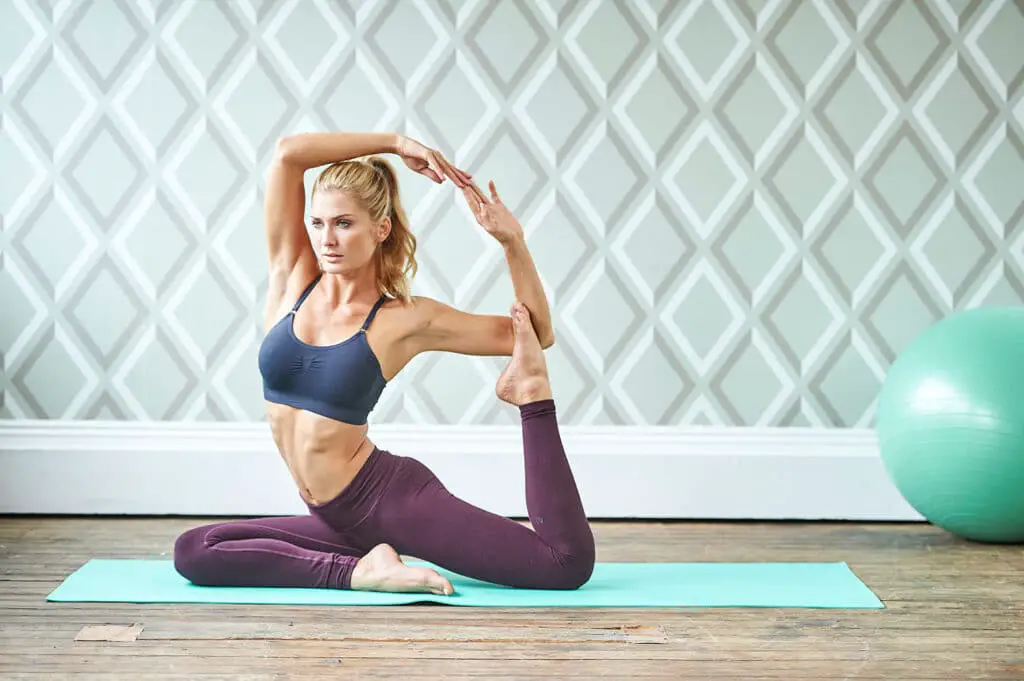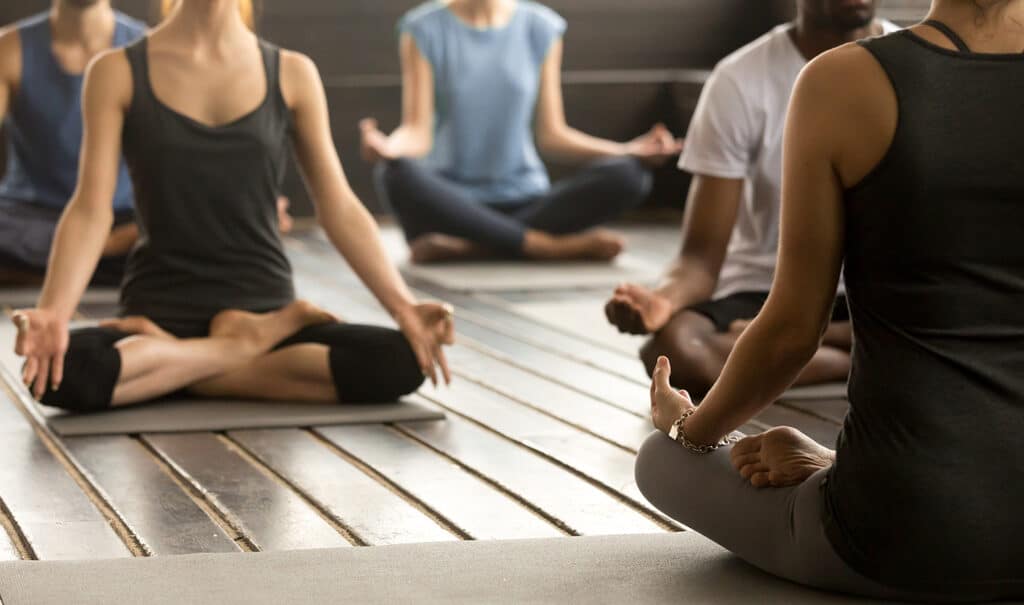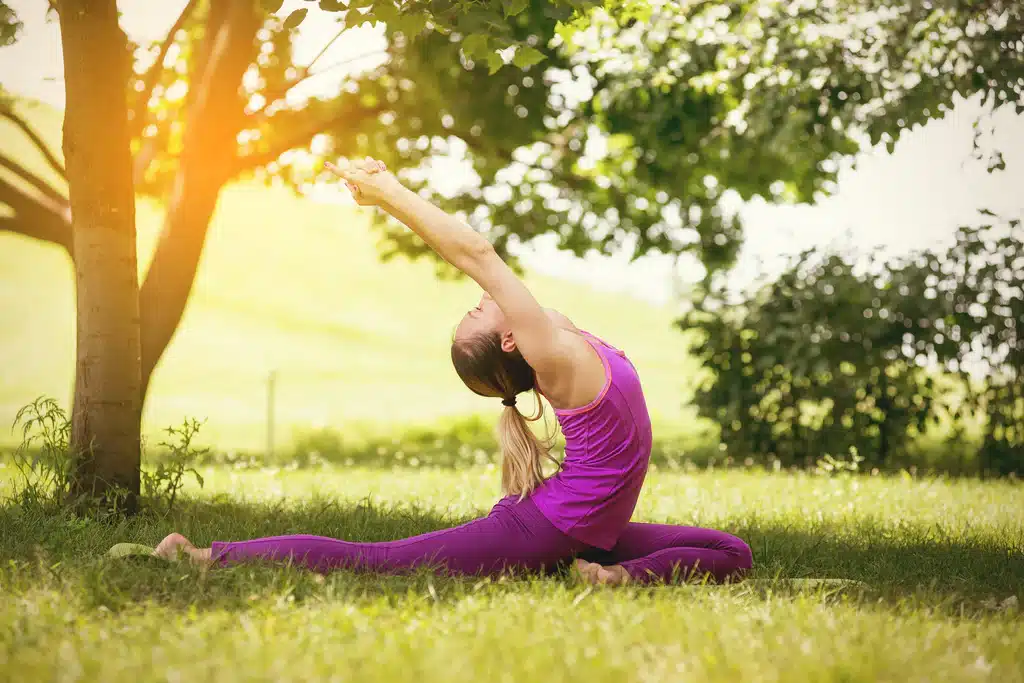Introduction
What Is The Difference Between Yoga And Pilates: Yoga and Pilates are both popular forms of mind-body exercise that have gained worldwide recognition for their numerous physical and mental health benefits. While these practices share some similarities in their focus on enhancing flexibility, strength, and overall well-being, they are distinct disciplines with unique origins, principles, and techniques. Understanding the key differences between yoga and Pilates is essential for individuals seeking to embark on a wellness journey or choose the practice that best suits their needs. In this exploration, we will delve into the contrasting characteristics of yoga and Pilates, shedding light on their origins, core principles, techniques, and the specific benefits they offer to practitioners.
By the end of this discussion, you will have a clearer understanding of the distinguishing features that set these two disciplines apart and empower you to make an informed choice about which practice aligns with your fitness and wellness goals. Yoga has its roots in ancient India and dates back over 5,000 years. It encompasses a wide range of physical, mental, and spiritual practices aimed at achieving balance and harmony in life. Yoga is deeply intertwined with Indian philosophy and spirituality, with various schools and styles emphasizing different aspects.
Pilates is a more recent development, created by Joseph Pilates in the early 20th century. Initially conceived as a rehabilitation program for soldiers during World War I, Pilates later evolved into a fitness system. It lacks the spiritual and philosophical components often associated with yoga.

Which is better yoga or Pilates?
“Between the two, if you’re looking to strengthen your core, improve your posture, and your overall fitness level and strength, go for Pilates,” Brandenberg recommends. “If you’re looking to increase your flexibility, find more peace of mind and that mind-body connection, I would go with yoga.”
Yoga: The Ancient Art of Balance
Yoga is an ancient practice that originated in India over 5,000 years ago. It encompasses a holistic approach to physical and mental health. Yoga aims to harmonize the body, mind, and spirit through a combination of physical postures, breathing exercises, meditation, and ethical principles.
Benefits of Yoga
Flexibility: Yoga promotes flexibility by stretching and lengthening muscles, enhancing range of motion.
Stress Reduction: Mindful breathing and meditation techniques help manage stress and anxiety.
Improved Posture: Yoga emphasizes body awareness, leading to better posture and alignment.
Strength: Certain yoga styles, like Ashtanga or Power Yoga, build muscular strength over time.
Mental Clarity: Meditation and mindfulness practices enhance mental focus and concentration.
Is Pilates a Hindu?
For one, yoga is an ancient practice rooted in Hinduism, “while Pilates, though uplifting, is not based in any spirituality,” explains Ungaro.
Pilates and its founder, Joseph Pilates, are not associated with Hinduism. Pilates is a physical fitness system developed by Joseph Pilates in the early 20th century, primarily in Germany. It is rooted in Western exercise science and draws inspiration from various fitness disciplines, including gymnastics, yoga, and martial arts. While there are some aspects of Pilates that may share similarities with yoga, such as the emphasis on breathing and body awareness, it is a distinct and secular practice.
Joseph Pilates was a German physical trainer who created the Pilates method as a way to improve physical fitness, particularly for injured dancers and athletes. His system incorporates controlled movements, specialized equipment (like the Pilates reformer), and a focus on core strength, flexibility, and overall body conditioning.
Hinduism, on the other hand, is one of the world’s oldest religions, with a rich spiritual and philosophical tradition that dates back thousands of years. It encompasses a wide range of beliefs, practices, and rituals, including yoga, which is a part of Hindu philosophy. Yoga is a spiritual and philosophical discipline that predates the development of Pilates by millennia. While yoga includes physical postures (asanas), it also includes ethical principles, meditation, and a deep spiritual dimension.
In summary, Pilates is not a Hindu practice, nor is Joseph Pilates a Hindu. Pilates is a Western exercise system developed in the 20th century, while Hinduism is a religion with a diverse and ancient history, which includes the practice of yoga as one of its components. While there may be some shared concepts between Pilates and yoga, they have different origins, purposes, and cultural backgrounds.
Is Pilates better than yoga for weight loss?
You can expect to burn about 145 calories during a 50-minute yoga class or 250 for an hour-long power yoga session. Pilates will burn more calories with an estimated 175 calories for a 50-minute beginner class. For advanced Pilates, you can burn up to 375 calories in an hour!
Pilates: A Core-Centric Approach
Muscle Toning: Pilates engages various muscle groups, which can lead to increased muscle mass. More muscle burns more calories, even at rest, aiding in weight management.
Improved Metabolism: Regular Pilates sessions can help boost metabolism, making it easier to burn calories and maintain a healthy weight.
Enhanced Posture: Better posture resulting from Pilates can make you appear taller and leaner, even without significant weight loss.
Mindful Eating: Pilates promotes mindfulness and body awareness, which can translate into more conscious eating habits and better portion control.
Stress Reduction: Lowering stress through Pilates may help prevent emotional eating, a common obstacle to weight loss.
What is more difficult Pilates or yoga?
Pilates exercises are a lot more intense and results may be noticed much quicker than yoga. Through frequent Pilates exercises, a flatter and firmer stomach may be easier to obtain. If you have back issues, care has to be taken with some yoga poses as they can sometimes exacerbate the problem.
Pilates: The Core-Strengthening Challenge
Muscle Engagement: Pilates often involves precise and controlled movements that target specific muscle groups. This requires focused engagement and control, making it challenging for beginners.
Core Work: A significant portion of Pilates exercises focuses on the core muscles, requiring both strength and stability. This can be physically demanding, especially for those with weaker core muscles.
Equipment Variations: While Pilates can be done on a mat, it can also involve specialized equipment like reformers, which adds an extra layer of challenge and complexity to the practice.
Progressive Difficulty: Pilates workouts can be tailored to different fitness levels, from beginner to advanced. As you progress, the exercises become more challenging, making it a versatile practice.
Balance and Coordination: Many Pilates exercises require balance and coordination, which can be difficult for some individuals, particularly when they first start.
Why is Pilates more expensive than yoga?
The Pilates instructors have spent considerable amount of time, effort and money in order to get themselves trained as instructors. This also means that Pilates instructors have a strong foundation in anatomy and movements as compared to many other fitness instructors.
Equipment and Facilities
Pilates: Pilates often involves the use of specialized equipment like reformers, cadillacs, and chairs. These machines are costly to purchase and maintain. Pilates studios need dedicated space and investment in high-quality equipment, which drives up operating costs.
Yoga: Yoga, in contrast, primarily relies on minimal equipment such as mats, blocks, and straps. While some yoga studios may offer props, they are relatively inexpensive compared to Pilates equipment. Yoga can be practiced in smaller spaces, reducing facility costs.
Instructor Training and Certification
Pilates: To become a certified Pilates instructor, individuals often undergo extensive training, which can be costly and time-consuming. This comprehensive training contributes to higher instructor fees.
Yoga: Yoga instructor certification varies widely, with some programs being shorter and less expensive. While there are highly trained and experienced yoga instructors who command higher fees, there is a broader range of certifications available, leading to a wider price spectrum for yoga classes.
Why do Bollywood actresses do Pilates?
Pilates is a low-impact workout that assists with balance, muscle and core strength, and flexibility and prevents injuries. It is a simple way to burn calories when you have less time on your hands.
Physical Fitness and Toning
One of the primary reasons Bollywood actresses do Pilates is its effectiveness in achieving and maintaining physical fitness. Pilates focuses on core strength, flexibility, and muscle toning, which aligns perfectly with the desire for a lean and toned physique that is often required for film roles and red carpet appearances. Regular Pilates sessions help actresses develop and maintain the stamina and body shape needed to perform demanding dance sequences and action scenes on screen.
Enhanced Flexibility and Posture
Pilates is renowned for its ability to improve flexibility and posture. Bollywood actresses benefit from enhanced flexibility as it allows them to perform intricate dance moves with grace and precision. Additionally, good posture is crucial for making a strong on-screen presence and avoiding injuries. Pilates helps in correcting posture issues and maintaining an upright stance.
Injury Prevention and Rehabilitation
The rigorous schedules and physically demanding roles in the film industry can lead to injuries and strains. Pilates is often recommended for injury prevention and rehabilitation. Many Bollywood actresses turn to Pilates to help recover from injuries, strengthen weakened muscles, and prevent future setbacks. It provides a gentle yet effective way to regain strength and mobility after injuries sustained during filming.
Is Pilates mostly for girls?
Pilates can benefit everyone, young or old. Men in particular tend to train in the gym in a way that over-emphasises certain muscle groups such as the chest, biceps, and the rectus abdominis (aka the ‘six pack’), while neglecting other muscle groups. This can lead to repeat injuries and weakness in some areas.
Pilates: Gender-Neutral Fitness
Historical Origins: Pilates was created by Joseph Pilates in the early 20th century and was initially designed for soldiers, not just women. Joseph Pilates himself was a man, and he developed the system to aid in injury rehabilitation and enhance physical fitness among both men and women.
Physical Benefits: Pilates focuses on core strength, flexibility, and overall body conditioning, which are beneficial for anyone looking to improve their physical fitness and well-being. These benefits are not gender-specific; they apply to all individuals equally.
Versatility: Pilates offers a versatile range of exercises that can be tailored to suit individual fitness levels and goals. Whether you are looking to build strength, increase flexibility, improve posture, or enhance athletic performance, Pilates can be adapted to meet your specific needs.
Injury Prevention and Rehabilitation: Pilates is often recommended for injury prevention and rehabilitation, making it valuable for individuals of all genders, including athletes and those with physical limitations.
Mental Well-being: Pilates incorporates mindfulness and controlled breathing techniques, promoting mental clarity and stress reduction. These aspects of Pilates are essential for managing the mental health of all individuals.
Is Pilates good or gym?
If you simply want to keep your body moving and feeling healthy, either is good. If your definition of fit involves lifting heavy weights and muscle hypertrophy, weight training will be better for reaching these goals. If mobility and improved functionality and core strength is a bigger aim, Pilates is better.
Pilates: The Mind-Body Connection
Core Strength and Stability: Pilates is renowned for its focus on core strength and stability. It engages deep muscles in the abdomen and lower back, helping improve posture, balance, and overall body control. If you are looking to enhance your core strength, Pilates is an excellent choice.
Flexibility and Range of Motion: Pilates incorporates a range of movements and stretches that promote flexibility. It can be especially helpful for individuals who want to improve their range of motion or those recovering from injuries.
Low Impact: Pilates is a low-impact exercise, making it suitable for individuals with joint issues or those who prefer gentler workouts. It is less likely to put stress on the joints compared to high-intensity gym workouts.
Mindfulness and Stress Reduction: Pilates often incorporates mindfulness techniques, such as controlled breathing and focused movements. This can help reduce stress and promote mental well-being.
Injury Rehabilitation: Many physical therapists recommend Pilates as part of rehabilitation programs due to its gentle yet effective approach to strengthening and conditioning.

Conclusion
The differences between yoga Pilates are rooted in their origins, philosophies, and core practices. Yoga, with its ancient heritage, offers a holistic approach encompassing physical postures, breath control, meditation, and ethical principles to unite the body, mind, and spirit. In contrast, Pilates, a more modern creation, emphasizes physical fitness, core strength, and precise body movements to enhance strength, stability, and flexibility.
While yoga is known for its spiritual and meditative aspects, Pilates is primarily a physical exercise system designed to improve body mechanics and functional movement. Choosing between the two often comes down to individual preferences, fitness goals, and the desire for a deeper spiritual connection (yoga) or a focus on physical conditioning (Pilates).
Ultimately, both yoga and Pilates offer valuable tools for enhancing overall well-being, and many people find benefits in incorporating aspects of both practices into their fitness routines. Whether you seek inner peace and mindfulness or aspire to develop a strong, balanced physique, understanding the differences between these disciplines empowers you to make an informed choice that aligns with your unique health and wellness goals.

